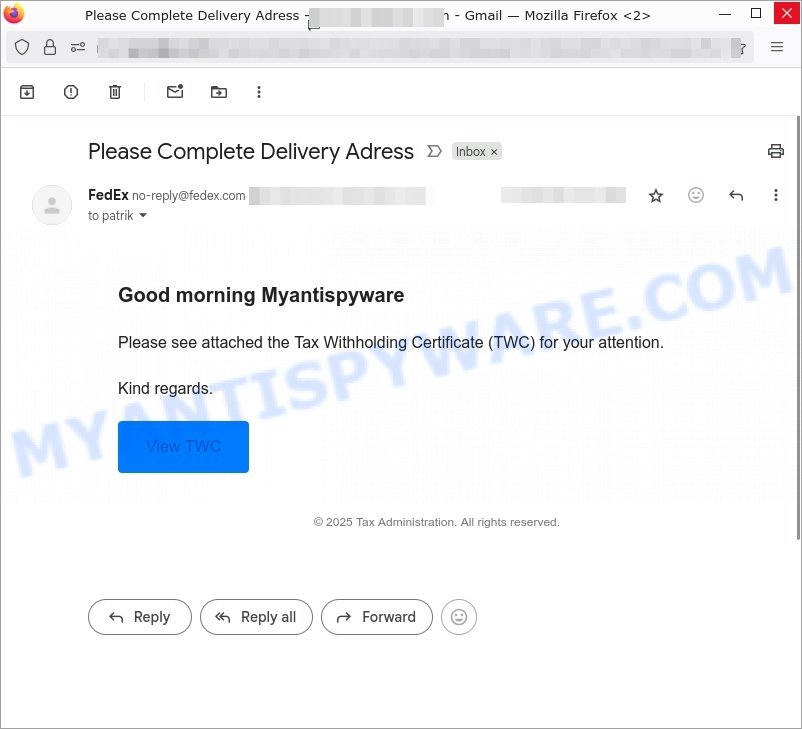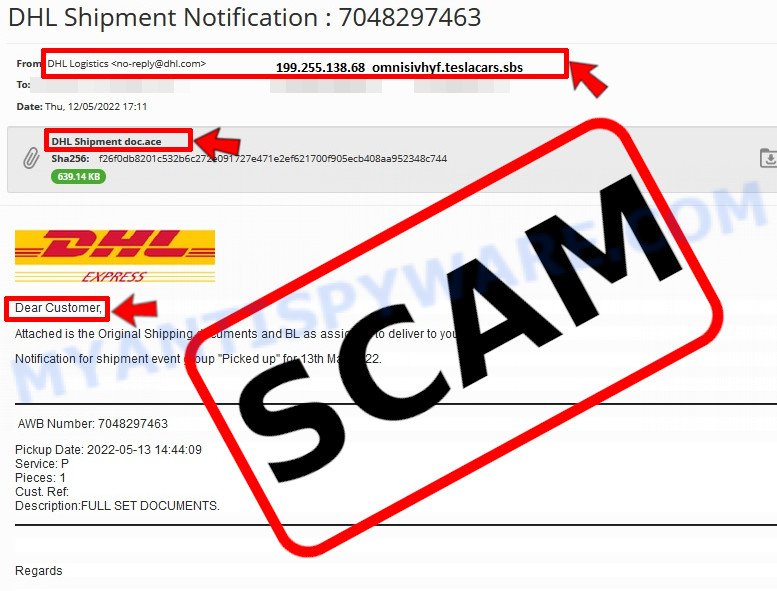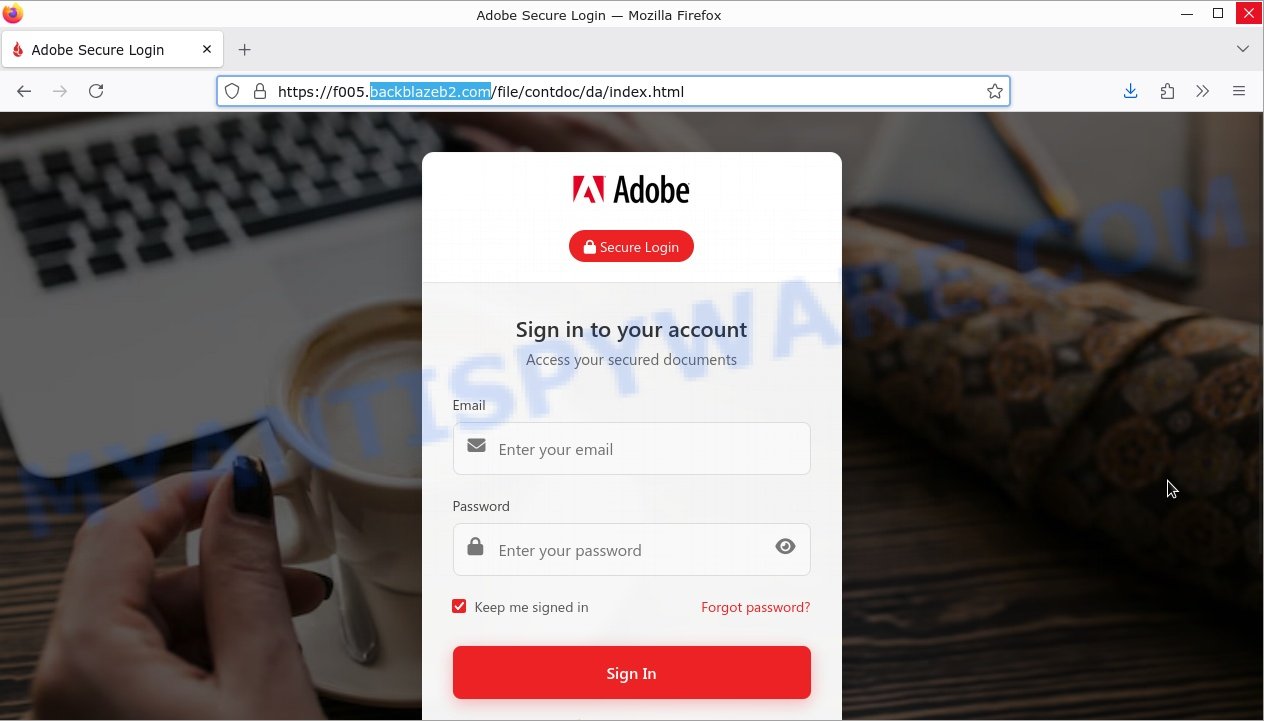Have you received an email from “FedEx” asking you to “Please Complete Delivery Adress” and seen a message about a Tax Withholding Certificate (TWC) with a button to “View TWC”? The email might look real and come from an address like no-reply@fedex.com.

Question: Is this email and the link to “View TWC” a safe and official FedEx message?
Investigation Findings: The link leads to a website with the domain “backblazeb2.com” that pretends to be an “Adobe Secure Login” page. But this domain is not related to Adobe or FedEx, and it uses a strange subdomain and URL that doesn’t match any official Adobe or FedEx sites. The site also copies Adobe’s look to appear real, but this is a common trick used in scams.
Answer: This email and website are a phishing scam trying to steal your login details. 💡 To protect yourself from scams like this, never click links in emails that seem unusual or ask for personal information. Always check the sender’s email carefully and visit official websites by typing their address manually in your browser. Additionally, use antivirus software and keep your system updated to help block phishing sites.
A typical “FedEx – Please Complete Delivery Adress” scam email reads as follows:
Subject:Please Complete Delivery Adress
FedEx no-reply@fedex.com
Good morning
Please see attached the Tax Withholding Certificate (TWC) for your attention.
Kind regards.
View TWC
© 2025 Tax Administration. All rights reserved.
🚨 Is This FedEx “Please Complete Delivery Address” Email a Scam?
The email claiming to be from FedEx asking you to “Please Complete Delivery Address” and providing a link labeled “View TWC” is a phishing scam designed to steal sensitive information by impersonating legitimate entities.
Key Red Flags:
- 🌐 Suspicious Link Domain: The “View TWC” button in the email leads to
backblazeb2.com, a domain completely unrelated to either FedEx or Adobe, both of which are mentioned or implied in the email or on the landing page. - ⚠️ Domain Impersonation: The phishing page masquerades as an “Adobe Secure Login” page while being hosted on the suspicious
backblazeb2.comdomain, which attempts to mimic the legitimate cloud backup service Backblaze but is unrelated and unauthorized. - 🔒 Mismatched Branding: The login page displays Adobe branding and color schemes to appear legitimate, but the domain and URL structure are inconsistent and unrelated to Adobe’s official services.
- 📛 Odd URL Structure and Subdomain: The page URL uses an obscure subdomain like
f005.backblazeb2.comwith an unusual path (/file/contdoc/da/index.html), not aligning with typical Adobe login URLs. This is a classic phishing tactic to confuse users. - 🚩 Unexpected Attachment and Unusual Content: The email references a “Tax Withholding Certificate (TWC)” and urges urgent action, which is unrelated to FedEx’s typical delivery operations—designed to create a false sense of urgency and lure victims into clicking the malicious link.
- 👤 Sender Name and Email Address: Although the sender appears as “FedEx no-reply@fedex.com”, the email headers can be spoofed. Always verify sender details carefully, as scammers frequently fake legitimate-looking addresses.
In summary, this “FedEx Please Complete Delivery Address” email and its linked site are part of a phishing scam aiming to steal your credentials or personal information. The use of a misleading domain unrelated to FedEx or Adobe, combined with impersonation tactics, is a clear warning sign. Do not click any links or provide any information. Instead, directly contact FedEx through official channels if you suspect a legitimate package issue or check your shipment status on FedEx’s official website.
Summary Table
| Name | FedEx “Please Complete Delivery Address” Phishing Scam |
| Type | Phishing / Credential Theft |
| Fake Sender | FedEx (no-reply@fedex.com) |
| Phishing Link | hxxps://f005.backblazeb2[.]com/file/contdoc/da/index.html |
| Fake Brand Used | Adobe Secure Login |
| Scam Signs | Domain mismatch, suspicious subdomain, unrelated domain, copied branding, unusual URL path |
📧 What to Do When You Receive the “FedEx – Please Complete Delivery Adress” Scam Email
We advise everyone who receives this email to follow the simple steps below to protect yourself from potential scams:
- ❌ Do not believe this email.
- 🔒 NEVER share your personal information and login credentials.
- 📎 Do not open unverified email attachments.
- 🚫 If there’s a link in the scam email, do not click it.
- 🔍 Do not enter your login credentials before examining the URL.
- 📣 Report the scam email to the FTC at www.ftc.gov.
If you accidentally click a phishing link or button in the “FedEx – Please Complete Delivery Adress” Email, suspect that your computer is infected with malware, or simply want to scan your computer for threats, use one of the free malware removal tools. Additionally, consider taking the following steps:
- 🔑 Change your passwords: Update passwords for your email, banking, and other important accounts.
- 🛡️ Enable two-factor authentication (2FA): Add an extra layer of security to your accounts.
- 📞 Contact your financial institutions: Inform them of any suspicious activity.
- 🔄 Monitor your accounts: Keep an eye on your bank statements and credit reports for any unusual activity.
🔍 How to Spot a Phishing Email
Phishing emails often share common characteristics; they are designed to trick victims into clicking on a phishing link or opening a malicious attachment. By recognizing these signs, you can detect phishing emails and prevent identity theft:

💡 Here Are Some Ways to Recognize a Phishing Email
- ✉️ Inconsistencies in Email Addresses: The most obvious way to spot a scam email is by finding inconsistencies in email addresses and domain names. If the email claims to be from a reputable company, like Amazon or PayPal, but is sent from a public email domain such as “gmail.com”, it’s probably a scam.
- 🔠 Misspelled Domain Names: Look carefully for any subtle misspellings in the domain name, such as “arnazon.com” where the “m” is replaced by “rn,” or “paypa1.com,” where the “l” is replaced by “1.” These are common tricks used by scammers.
- 👋 Generic Greetings: If the email starts with a generic “Dear Customer”, “Dear Sir”, or “Dear Madam”, it may not be from your actual shopping site or bank.
- 🔗 Suspicious Links: If you suspect an email may be a scam, do not click on any links. Instead, hover over the link without clicking to see the actual URL in a small popup. This works for both image links and text links.
- 📎 Unexpected Attachments: Email attachments should always be verified before opening. Scan any attachments for viruses, especially if they have unfamiliar extensions or are commonly associated with malware (e.g., .zip, .exe, .scr).
- ⏰ Sense of Urgency: Creating a false sense of urgency is a common tactic in phishing emails. Be wary of emails that claim you must act immediately by calling, opening an attachment, or clicking a link.
- 📝 Spelling and Grammar Errors: Many phishing emails contain spelling mistakes or grammatical errors. Professional companies usually proofread their communications carefully.
- 🔒 Requests for Sensitive Information: Legitimate organizations typically do not ask for sensitive information (like passwords or Social Security numbers) via email.
✅ Conclusion
The FedEx – Please Complete Delivery Address email is a phishing scam that attempts to trick recipients into clicking on malicious links by masquerading as an official FedEx communication. The email’s claim of a “Tax Withholding Certificate (TWC)” and urging to “Complete Delivery Address” serves as bait to prompt immediate action, leveraging urgency and seemingly legitimate content.
Key indicators confirming this is a scam include misleading sender information using “no-reply@fedex.com”, but linking the “View TWC” button to a suspicious domain unrelated to FedEx or any tax authority — backblazeb2.com. This domain mimics names of legitimate services like Backblaze, yet has no connection to FedEx or Adobe, and is frequently associated with phishing attacks.
Additionally, the phishing webpage impersonates an “Adobe Secure Login” page to harvest credentials, a tactic designed to confuse and exploit trust in reputable brands. The mismatched domain name, unusual URL paths, and copied branding elements further confirm its fraudulent nature.
Bottom Line: Do not click on links or download attachments from unexpected FedEx emails requesting personal or financial information. Always verify the authenticity of emails by checking sender addresses carefully and accessing official company sites directly through a trusted browser rather than email links.


















